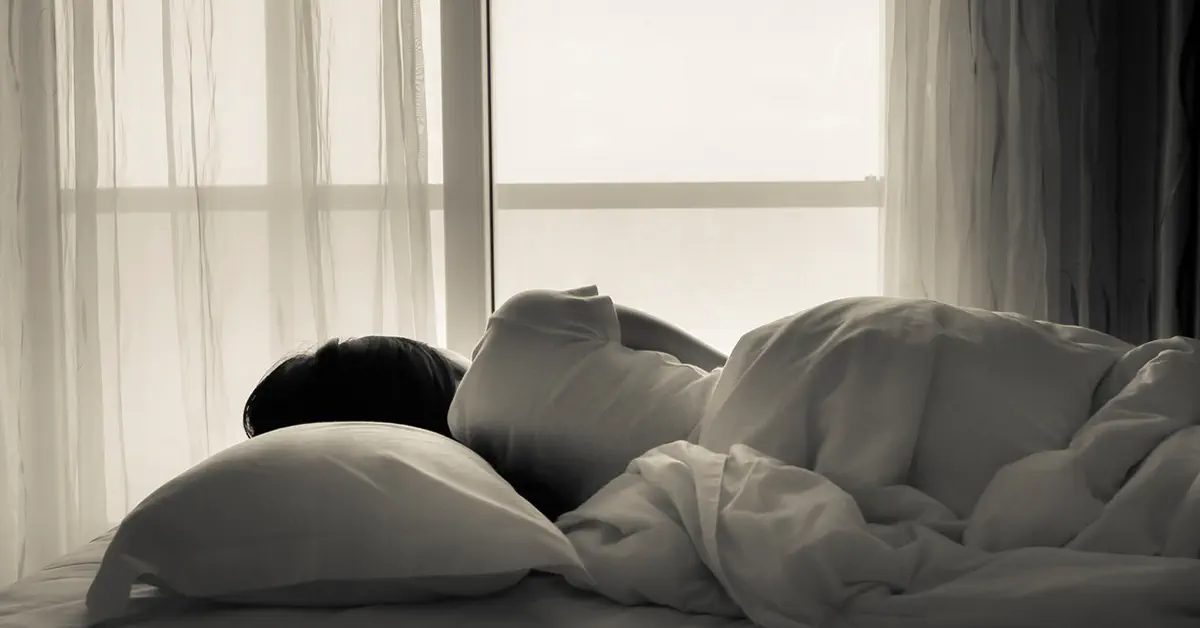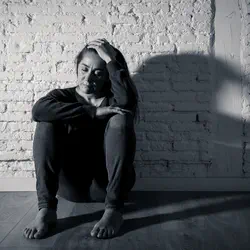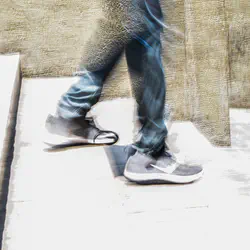DRUGS: WHAT YOU
NEED TO KNOW Booklet

Signs and Symptoms of Sleep Medication Addiction

There are several types of drugs that may be given to help a person sleep, but there is a group of drugs specifically prescribed to help sleep. These drugs are not generally used for other purposes. These are referred to as sleep aids or sleep medication.
These drugs that most people think of as sleep medication are:
- zolpidem (Ambien, Ambien CR, Edluar, and Zolpimist)
- eszopiclone (Lunesta)
- zaleplon (Sonata)
- suvorexant (Belsomna)
This list of drugs makes up a class called non-benzodiazepine sedative-hypnotics.
Also given to help people sleep are benzodiazepines like Xanax, Valium and Halcion because they relax a person and cause sleepiness. Barbiturates such as Nembutal and Seconal have long been given as sleeping pills but use has waned since benzodiazepines have become available.
While both benzodiazepines and barbiturates are addictive, barbiturates can more readily cause fatal overdoses. It is possible to overdose on benzodiazepines but it is not as likely. Therefore, barbiturates are now prescribed to fewer patients.
Non-benzodiazepine sedative-hypnotics are a different type of drug that works on the brain and the nervous system in a different way. Like benzodiazepines and barbiturates, they can be addictive and can cause fatal overdoses, especially when mixed with other medications or illicit drugs.
All the medications mentioned in this article are controlled substances, which means there are specific laws controlling their use, storage and distribution. Drugs in this category have a greater potential for abuse and addiction than many other drugs.
The Extent of Sleep Problems and Misuse of These Drugs

As many as 25% of Americans are unsatisfied with their sleep, with between 10% and 15% reporting insomnia. While the Substance Abuse and Mental Health Services Administration does not isolate the number of people abusing non-benzodiazepine sedative-hypnotics, the agency does note that 6.2 million people abused all types of sedatives or tranquilizers in 2020.1
A person abuses these drugs by taking more than a doctor prescribes, taking them without a prescription or taking them in a way not recommended by a doctor, for example, crushing and snorting a pill. Once a person starts misusing one of these drugs, they can quickly develop a tolerance and become dependent on the drug. If they then abruptly try to quit using it, they will suffer withdrawal symptoms.
As of 2018, sedatives of the non-benzodiazepine type were described as the primary drug causing their addictions by more than 2,000 people who arrived at rehab facilities.2 However, most people misusing prescription drugs take more than one type of drug so the extent of abuse and dependence is undoubtedly far more than this number would indicate.
Physical Signs of Sleep Medication Addiction
Non-benzodiazepine hypnotics and benzodiazepines both tend to produce a feeling of being “hungover” the day after taking them. Further symptoms of the abuse of non-benzodiazepine sedative-hypnotic drugs include:
- sedation
- drowsiness
- cognitive impairment
- dizziness
- poor coordination
- slowed reaction time
- stomach upset
- loss of appetite
- vision problems
- shaking
- poor balance
- sensitivity to noise
- altered sense of smell
- painful menstruation
- heavy menstruation
- impaired ability to drive
- lack of muscle control affecting swallowing, eye control and fine motor movements
The symptoms associated with misuse of the drugs will vary by which drug is being consumed. In general, these adverse symptoms are more pronounced in elderly people.
Sleep Aids and Alcohol
The consumption of alcohol along with these drugs can make the unpleasant effects of use even worse. However, a person who is trying to get high on sleep aids may find that the drugs cause a similar sensation to that of being drunk on alcohol, including a feeling of euphoria.
Some people will seek out sleep aids because they like the intensification of the out-of-control sensation they get after drinking alcohol. Because they consider these effects desirable, they may obtain sleep aids from family members’ medicine cabinets or from the illicit market.
Behavioral and Emotional Signs of Sleep Medication Use

These drugs tend to cause what’s called “complex sleep behaviors.” The Food and Drug Administration has issued a warning about this class of drug and its ability to cause a person to take potentially dangerous actions while they are asleep and unaware of what they are doing.3 The next day, they may not even remember that they have taken these actions.
Some of these actions have resulted in injury or even death, for example, accidentally overdosing on this or other medication, falling, suffering from burns, inadvertently shooting themselves, and walking outside in extremely cold weather without sufficient protection.
Those are not the only signs of abusing these drugs. Serious mental effects of some of these drugs include:
- hallucinations
- memory problems
- aggressiveness
- anxiety
- depression
- thoughts of suicide
- confusion
- difficulty concentrating
- becoming easily agitated
As with the physical effect of abusing these drugs, the signs will vary by which drug is being abused.
The Long-Term Harm of Sleep Medication Addiction
Among other effects, these drugs slow a person’s breathing. If their use is mixed with any drug that has the same effect, such as benzodiazepines, opioids or alcohol, the effect can be deadly.
A British study compared the health of 10,000 people taking a prescribed hypnotic drug with 20,000 people not taking this type of drug.4 Over a multi-year period, it was found that those taking hypnotics had greater than threefold increased hazards of death, even if they were only prescribed as few as 18 pills per year. The hypnotics included in this study were zolpidem, temazepam, eszopiclone, zaleplon, benzodiazepines, barbiturates and sedative antihistamines. Additionally, the incidence of cancer increased 35% among those prescribed high doses of these drugs.
When used medically, many doctors recommend only using them for a limited time. A person who obtains them on the illicit market may never know about their ability to cause dependence or death.
It is common among people who abuse stimulants such as cocaine or methamphetamine to look for a sedating drug to alleviate the edgy effect of the stimulants so they can rest. Some people in this situation will choose one of these sleep medications to enable them to relax. The far better solution is to get the help they need to stop using drugs rather than add another drug to the mix, especially one that has its own serious effects.
Sleep Medication Overdose
It is possible to fatally overdose on non-benzodiazepine sedative-hypnotics. A recent study published in The Lancet revealed that the number of fatal overdoses from these drugs has risen significantly over the last two decades.5
Withdrawal from Sleep Medications
Anyone taking these drugs who gets concerned about their effects should never stop taking them abruptly because of the possibility of serious withdrawal symptoms. A person suddenly stopping sleep aids might suffer:
- strange dreams
- stomach cramps
- muscle cramps
- vomiting
- anxiety
- panic attacks
- insomnia
- shaking
- uncontrollable crying
- nervousness
In a few cases, those withdrawing from these drugs have suffered seizures. It is important to work with a doctor when the abuse of these drugs is going to stop or a person is going to enter rehab. The most important thing is to get a person addicted to sleep medications the help they need to both get restful sleep and end their abuse on a medication that could create dangerous mental and physical problems.
Sources:
-
SAMHSA. “Key Substance Use and Mental Health Indicators in the United States: Results from the 2020 National Survey on Drug Use and Health.” Substance Abuse and Mental Health, 2021. SAMHSA Article ↩︎
-
SAMHSA. “Admissions aged 12 years and older, by primary substance use: Number, 2008–2018.” SAMHSA, 2019. SAMHSA Article ↩︎
-
FDA. “Taking Z-drugs for Insomnia? Know the Risks.” FDA, 2019. FDA Article ↩︎
-
British Medical Journal Open. “Hypnotics’ association with mortality or cancer: a matched cohort study.” BMJ Open, 2012. BMJ Open Article ↩︎
-
The Lancet. “Overdose deaths involving non-BZD hypnotic/sedatives in the USA: Trends analyses.” The Lancet, 2022. The Lancet Article ↩︎


